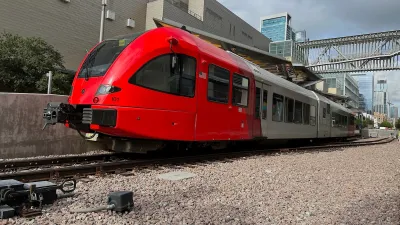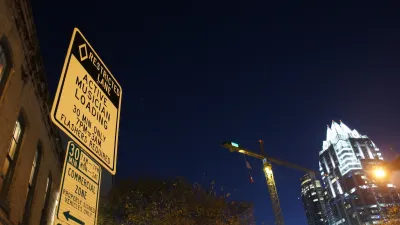Could it be that places for the dead might be a new source of urban innovation? Austin provides an example of new thinking regarding urban resting places.
Anna Clark undertakes an examination of the land use and design challenges presented by cemeteries and other sites for honoring the dead.
First Clark establishes the challenges:
"As the meeting point between the living and the dead, cemeteries are peculiarly fraught ground. That makes them easy for cities to ignore. Crime, environmental problems, historic preservation, social class, religious traditions, and the thorny legacy of who is included in cities, and who is not, all come crashing together in urban cemeteries. It’s a toxic tangle of priorities that often contradict each other, and when the cemeteries are on public land, they are an endless drain on city budgets. If no descendants are around anymore to care, if eroded grave markers make it hard to even tell who is buried where, is there any harm in letting nature run its course?"
In Austin, Texas, however, planners are looking for new ways to negotiate these tricky questions:
"The city is creating its first-ever master plan for five municipal cemeteries, the oldest of which dates to the founding of Texas’ capital city in 1839. The proposed plan — a 542-page behemoth — debuted in January. It details a rehabilitative approach to historic cemeteries: protecting their character through repair of gravestones, relics, and plant life, expanding visitor services, and developing interpretive programming that, in effect, returns cemeteries to their origins as public parks."
Scott notes that the cities of Sacramento, California and New Braunfels, Texas are the only cities in the country with cemetery master plans, so Austin's planners don't exactly have a great deal of precedent to go on in their efforts.
The long article goes into a lot more detail about the design and planning solutions that Austin, and other cities, could potentially devote to their cemeteries.
FULL STORY: Designing for the Dead: The Perfect City Cemetery

Study: Maui’s Plan to Convert Vacation Rentals to Long-Term Housing Could Cause Nearly $1 Billion Economic Loss
The plan would reduce visitor accommodation by 25,% resulting in 1,900 jobs lost.

North Texas Transit Leaders Tout Benefits of TOD for Growing Region
At a summit focused on transit-oriented development, policymakers discussed how North Texas’ expanded light rail system can serve as a tool for economic growth.

Why Should We Subsidize Public Transportation?
Many public transit agencies face financial stress due to rising costs, declining fare revenue, and declining subsidies. Transit advocates must provide a strong business case for increasing public transit funding.

How to Make US Trains Faster
Changes to boarding platforms and a switch to electric trains could improve U.S. passenger rail service without the added cost of high-speed rail.

Columbia’s Revitalized ‘Loop’ Is a Hub for Local Entrepreneurs
A focus on small businesses is helping a commercial corridor in Columbia, Missouri thrive.

Invasive Insect Threatens Minnesota’s Ash Forests
The Emerald Ash Borer is a rapidly spreading invasive pest threatening Minnesota’s ash trees, and homeowners are encouraged to plant diverse replacement species, avoid moving ash firewood, and monitor for signs of infestation.
Urban Design for Planners 1: Software Tools
This six-course series explores essential urban design concepts using open source software and equips planners with the tools they need to participate fully in the urban design process.
Planning for Universal Design
Learn the tools for implementing Universal Design in planning regulations.
City of Santa Clarita
Ascent Environmental
Institute for Housing and Urban Development Studies (IHS)
City of Grandview
Harvard GSD Executive Education
Toledo-Lucas County Plan Commissions
Salt Lake City
NYU Wagner Graduate School of Public Service




























